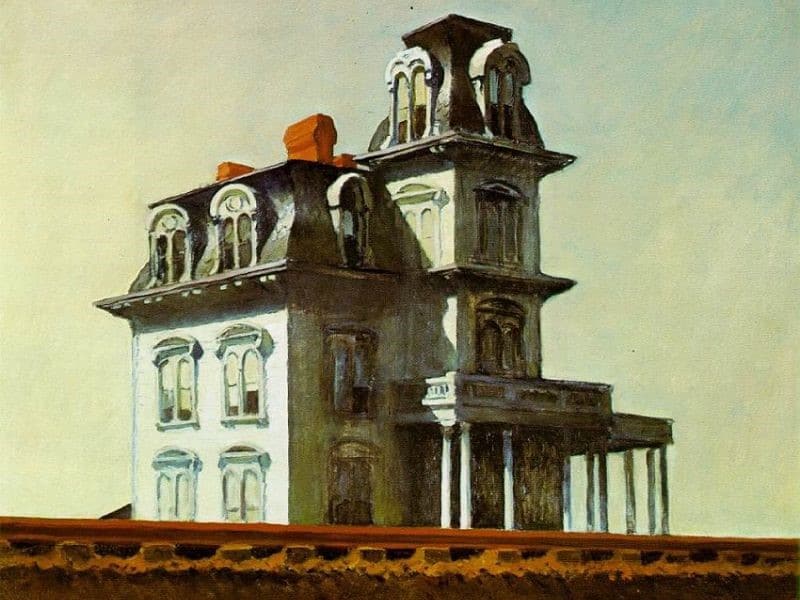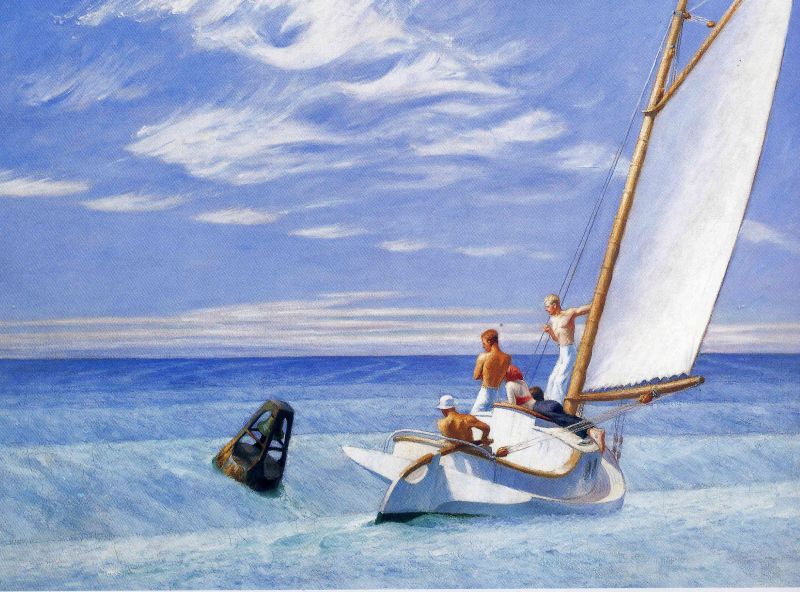
Best artists of all time: Edward Hopper 1882 – 1967
Edward Hopper is widely acknoledged as the most important realist painter of twentieth-century America. But his vision of reality was a selective one, reflecting his own temperament in the empty cityscapes, landscapes, and isolated figures he chose to paint. His work demonstrates that realism is not merely a literal or photographic copying of what we see, but an interpretive rendering.

Edward Hopper was born in 1882, in NY, into a middle class family. From 1900 to 1906 he studied at the NY School of Art, and while in school, shifted from illustration to works of fine art. Upon completing his schooling, he worked as an illustrator for a short period of time; once this career path ended, he made three international trips, which had a great influence on the future of his work, and the type of art he would engage in during the course of his career. He made three trips to Europe between 1906 and 1910. In retrospect, Europe meant France, and more specifically, Paris, for Edward Hopper. This city , its architecture, light, and art tradition, decisively affected his development.

“House by the railroad” was a famous painting created by the artist, which was the first work to be acquired for the Museum of Modern Art, which had only recently been opened for general viewing. Strongly defined lighting, clearly defined lines, and cropped viewpoints, were some of the features which this art work captured; and, this embodied the style in which Edward Hopper would use later on in his career, and with the future works that he would produce during the course of his career as an artist.
In 1923, Edward Hopper married a fellow student who attended the NY Academy where he got his education, Josephine Nivision. Not only did she pose for nearly half of the female figure pieces which he created during his career, she also encouraged and pushed him to engage in different art forms during his career as well.
In 1933, Edward Hopper received further praises for the works he had done, and for a piece that was on exhibit at the Museum of Modern Art. His highly identifiable style, and mature painting styles, were some things he had become known for during this period. The gorgeous landscapes, the quiet rooms and empty rooms he designed, and the transitory effect which many of his works posed, created a sense of contemporary life and a new style, which many in the art world recognized, and many praised him for this distinct style he had created in his art forms.

In Edward Hopper’s most famous piece “Nighthawks” there are four customers and a waiter, who are in a brightly lit diner at night. It was a piece created during a wartime; and many believe that their disconnect with the waiter, and with the external world, represent the feelings of many Americans during this period, because of the war. The piece was set up in 1942, in the Art Institute of Chicago, and was seen by many people while it was on exhibit for a show.
Between the 1930s and 1950s, Edward Hopper and his wife spent quite a bit of time, and most of their summers, visiting Cape Cod, Massachusetts. In many of the works that Hopper created during this period, many of the scenes, the common locations, and nearby attractions which they visited, were often seen in the art forms that he created during his career.

Later in his career, many of his works were displayed in various exhibits, namely at the Whitney Museum, which was located in New York City. Later in his career, during the 1940s, was a period in which he found the most commercial success.
The themes of the tensions between individuals and the conflict between tradition and progress in both rural and urban settings, are motif that Edward Hopper always returns to, as artists have always returned to their beloved themes – Van Gogh his Sunflowers, and Monet his Water Lilies. His choices of subject matter – particularly the places he painted – seem to have been somewhat unpredictable, since they were part of his constant battle with the chronic boredom that often stifled his urge to paint. This is what kept Hopper on the move – his search for inspiration, least painfully found in the stimulation of new surroundings.
Today, many art historians consider Edward Hopper as the most prominent American impressionist, along with Winslow Homer of 19th century.





